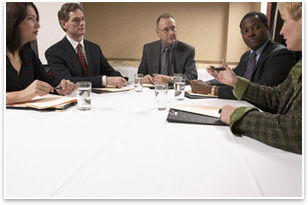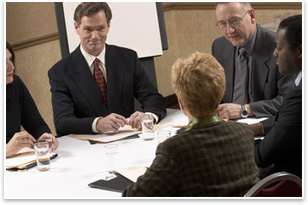 Team Building for Architects: Myths, Strategies, and Tips Team Building for Architects: Myths, Strategies, and Tips
by William C. Ronco, PhD
Summary: Team building is an essential competence for architects, yet many architects struggle to build teams effectively. In fact, some architects see an inherent conflict between teamwork and architecture. Evoking the nightmares of design by committee, some architects resist any attempts to understand or work effectively with teams and team building. Even the more team-oriented architects often fall short in their ability to participate in and lead teams. Following are some common myths about team building as well as some tips for architects.
Five Myths and Facts About Team Building
Although the field of group dynamics and the practice of team building has existed for several decades, a number of myths about the nature of team building prevail:
Myth 1: Team building should never be needed. Select good people, and teamwork will follow.
Fact: Team building is necessary because, especially in the practice of architecture, strong individual performers are often ineffective when working in teams. Conflict and miscommunication are inevitable; team building helps groups understand and manage conflict and miscommunication effectively.
Team building is necessary because, especially in the practice of architecture, strong individual performers are often ineffective when working in teams.
Myth 2: Team building is a one-time event like bowling or paintball.
Fact: One-time events can help build a team, but effective team building is usually more of an ongoing process.
Myth 3: Team building depends upon chemistry. People either get along or they don't.
Fact: For professional teams, team building is a form of practice. Like sports teams, professional teams perform at higher levels when they practice.
Myth 4: The goal of most team building is to get team members to like each other.
Fact: In effective teams, members may or may not like each other. Team building can (and often should) be more focused on bottom-line team performance and productivity.
 Myth 5: Most team building aims to eliminate conflict and disagreement from groups. Myth 5: Most team building aims to eliminate conflict and disagreement from groups.
Fact: Conflict and disagreement can help make groups more effective at problem solving. Team building usually aims to help groups manage conflict more effectively, not to eliminate it.
Team-building content and process
Team building comprises four different types of tasks. Our work
with architecture teams of all kinds leads us to believe that the
four tasks reinforce each other and that teams must address all
four to achieve meaningful progress.
- Taking stock or self-assessment. These tasks measure team performance and productivity. For example, through surveys on the team's performance completed by its customers or stakeholders, team profiles of individual members' Myers-Briggs personality types, and other types of assessment.
- Clarifying goals. Many teams suffer from team performance that is less than optimal because they never fully articulate their shared goals. We often find that interpersonal conflicts in architecture teams are really the symptoms of insufficient work done to clarify the team's vision, mission, and goals.
- Improving group communication skills. The team's ability to solve problems, brainstorm, reach consensus, and make decisions is the aspect of architecture team performance that most resembles sports teams in that practice can improve performance in these areas.
- Implementing appropriate processes. How often does the team meet? Who attends? Who takes notes? How do group members share information? Improving teamwork often requires the team to adopt more effective processes for everyday communications.
Many teams suffer from team performance that is less than optimal because they never fully articulate their shared goals.
Team-building best practices and tips for architects
- Anticipate the need for team building with all teams involved in architecture practice. Whether you are working on a project team, an owner's team, an internal department, or a special project, the team will benefit from a conscious effort of team building.
- Make sure your work with team building encompasses all four of the team-building tasks. Each task is interesting and will produce some results. However, team building that is limited to work in just one of the tasks will produce limited outcomes.
- Beware of "retreats." Team-building retreats can generate valuable insights. Too often, however, the notion of a retreat makes it seem that generating the insight is the end of team building.
- Most important: Make team building an ongoing process. The best sports teams continue to practice all season and often all year. Architecture teams also benefit most from team building when they make it an integral part of their ongoing work.
|



